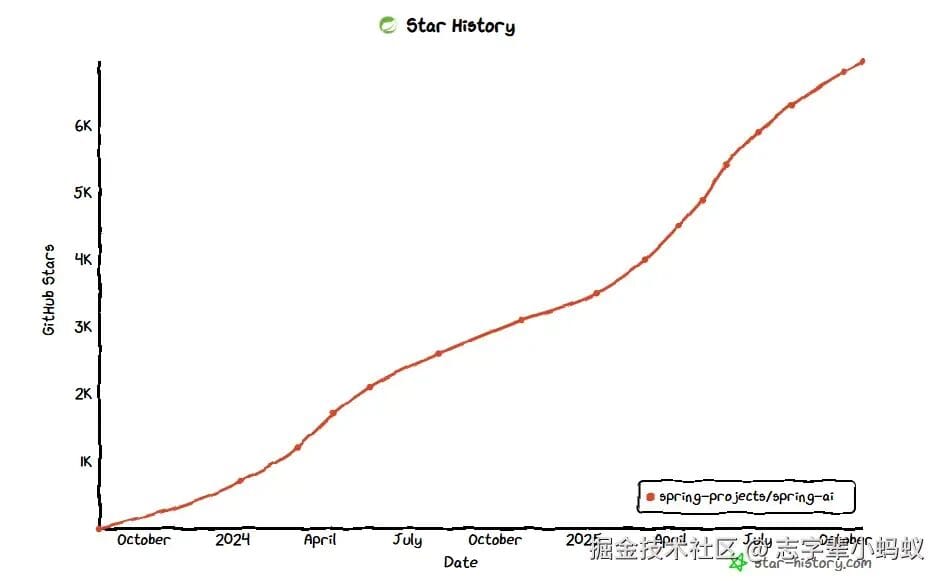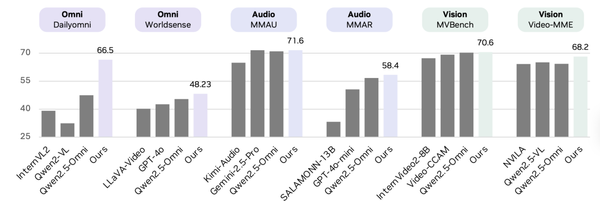Better Late Than Never: A Look at How SpringAI Is Doing Now

# Introduction
As a seasoned Java professional, I’ve closely followed the language's role in the AI space.
Due to **inherent limitations**, however, **Java is unlikely to become a mainstream AI development language**.
That said, Java **does** have a place in the AI ecosystem — especially as a **backend request-forwarding layer** for B2B and B2C applications.
In this article, we’ll focus on **SpringAI**, a key framework in this niche.
Initially, I found early releases disappointing and unsuitable for production use.
But after **two years of rapid iteration**, is SpringAI now worth learning?

---
## Evolution of SpringAI
| Version | Release Date | Core Changes |
| --- | --- | --- |
| **0.8.1** | Mar 2024 | First public release with basic AI model integration |
| **1.0.0-M1** | May 2024 | ChatClient API, structured output, conversation memory |
| **1.0.0-M2** | Aug 2024 | Expanded provider support, tool calling |
| **1.0.0-M6** | Feb 2025 | @Tool annotation, MCP protocol integration |
| **1.0.0-M7** | Apr 2025 | Independent RAG module, modular architecture |
| **1.0.0-RC1** | May 13, 2025 | API lock-in, production readiness |
| **1.0.0 GA** | May 20, 2025 | First production-grade release |
| **1.0.3** | Oct 2025 | GraalVM native image support |
| **1.1.0-M3** | Oct 15, 2025 | MCP SDK upgrade, multi-document support |
**Key takeaway:** SpringAI focuses on **AI service orchestration**, not computation — leveraging Java’s server-side strengths to unify backend AI integration.
---
## Layered Architecture Overview
┌─────────────────────────────────────────────────────────┐
│ Application Layer │
│ ChatClient API | Prompt Templates | Structured Output │
└─────────────────────────────────────────────────────────┘
↓
┌─────────────────────────────────────────────────────────┐
│ Integration Layer │
│ Spring Boot Auto-Config | Dependency Injection │
└─────────────────────────────────────────────────────────┘
↓
┌─────────────────────────────────────────────────────────┐
│ Core Layer │
│ Model Abstraction | Embedding | Vector Store | Memory │
└─────────────────────────────────────────────────────────┘
↓
┌─────────────────────────────────────────────────────────┐
│ Extension Layer │
│ RAG | Agent | MCP | Tool Calling | Observability │
└─────────────────────────────────────────────────────────┘
---
## Key Features
### 1. Unified API Interfaces
SpringAI abstracts away provider-specific differences via **`ChatClient`** and **`EmbeddingClient`**.
This enables switching between **OpenAI**, **Claude**, **Google Gemini**, **AWS Bedrock**, **Ali Tongyi Qianwen**, **DeepSeek**, **Zhipu AI**, **Ollama**, and **20+ other providers** **without touching business code**.
**Example: Basic prompt call**
return chatClient.prompt()
.system("You are a professional text summarization assistant...")
.user("Please generate a summary for the following text:\n" + text)
.options(OpenAiChatOptions.builder()
.withTemperature(0.3)
.withMaxTokens(300)
.build())
.call()
.content();
⚠ **Tip:** Provider differences in *context limits* and parameters like `maxTokens` can greatly impact output quality.
For **one-click model switching**, learn to fine-tune configuration per provider.
---
### 2. Prompt Engineering & Templating
Supports defining structured prompts for **System/User/Assistant/Tool** roles and rendering with variables:
SystemPromptTemplate sysTpl = new SystemPromptTemplate("Respond in the style of {role}");
Message sysMsg = sysTpl.createMessage(Map.of("role", "Technical Expert"));
UserMessage userMsg = new UserMessage("Explain Spring Boot auto-configuration");
Prompt prompt = new Prompt(List.of(sysMsg, userMsg));
String result = chatClient.prompt(prompt).call().content();
---
### 3. Streaming Responses & Async Processing
Full **Reactor** integration for:
- **Synchronous** calls
- **Streaming** via SSE/Flux
- **Asynchronous** flows
Example: SSE streaming endpoint
@GetMapping(value = "/stream", produces = MediaType.TEXT_EVENT_STREAM_VALUE)
public Flux stream(@RequestParam String msg) {
return chatClient.prompt().user(msg).stream().chatResponse();
}
---
### 4. RAG (Retrieval-Augmented Generation)
Built-in vector store abstraction with support for **20+ databases** (PGVector, Milvus, Pinecone, Redis, Chroma, etc.).
**Core RAG flow:**
1. **Retrieve** relevant data
2. **Augment** prompt with context
3. **Generate** answer
**Example query:**
@Service
public class RagService {
@Autowired private VectorStore vectorStore;
@Autowired private ChatClient chatClient;
public String query(String question) {
List docs = vectorStore.similaritySearch(question);
String context = docs.stream()
.map(Document::getContent)
.collect(Collectors.joining("\n"));
return chatClient.prompt()
.user("Based on...\n" + context + "\nQuestion: " + question)
.call()
.content();
}
}
---
### 5. Conversation Memory
`ChatMemory` stores multi-turn dialogue across sessions.
@Autowired private ChatMemory chatMemory;
@Autowired private ChatClient chatClient;
public String chat(String sessionId, String msg) {
List history = chatMemory.get(sessionId);
history.add(new UserMessage(msg));
String reply = chatClient.prompt(new Prompt(history)).call().content();
chatMemory.add(sessionId, new AssistantMessage(reply));
return reply;
}
Default: **`InMemoryChatMemory`** — you can implement persistent storage.
---
### 6. Multimodal Support
Text, image, and audio input/output:
UserMessage msg = new UserMessage("Describe this image",
new Media(MimeTypeUtils.IMAGE_PNG, new ClassPathResource("photo.png")));
String description = chatClient.prompt(new Prompt(msg)).call().content();
---
### 7. Agent Workflows
Multi-role agent orchestration for complex tasks:
@Bean(name = "opsAgent")
public Agent opsAgent(ChatClient.Builder builder, WeatherTool weatherTool, DatabaseTool databaseTool) {
ChatClient client = builder.defaultSystem("You are an intelligent assistant...")
.build();
return Agent.builder()
.chatClient(client)
.tools(List.of(weatherTool, databaseTool))
.build();
}
---
### 8. Other Features
- **Function calling & MCP integration**
- **Structured output mapping**chatClient.prompt().user("Minecraft").call().entity(MovieReview.class);
- **Annotation-based AI calls** (e.g., `@AiPrompt`)
---
## When to Use SpringAI
**Pros:**
- Fast provider switching
- Strong integration with Spring Boot ecosystem
- Streamlined RAG, memory, and multimodal workflows
**Cons:**
- Not suitable as a model runtime
- MCP support less compelling vs Python
---
## Conclusion
SpringAI’s **production readiness** means:
- If you need a **service-layer AI interface**, it’s an efficient choice.
- Paired with Java’s backend strengths, you can integrate AI into microservices with minimal effort.
For teams aiming to **monetize AI-generated content**, integrating such backend orchestration with **[AiToEarn](https://aitoearn.ai/)** enables:
- Multi-platform publishing (Douyin, Kwai, WeChat, Bilibili, Rednote, Facebook, Instagram, LinkedIn, Threads, YouTube, Pinterest, X/Twitter)
- Built-in analytics and model ranking
- Unified creation-to-distribution workflows
By combining **SpringAI’s developer-friendly integration** with **AiToEarn’s monetization pipeline**, your AI-powered applications can deliver business value end-to-end.
---



